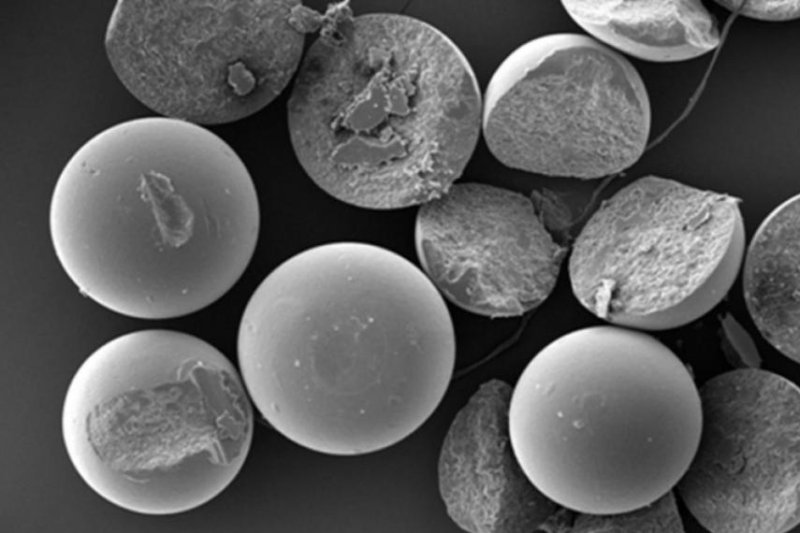A closeup of the polyethylene microbeads found in many face wash products. Photo by Plymouth University
PLYMOUTH, England, Aug. 26 (UPI) -- Though tiny, it's not hard to find microbeads, or microplastics, in the cosmetics industry. They're in toothpastes, facial soaps, exfoliants and more.
It's an increasingly well-documented source of plastic waste, but exactly how big is the problem?
Recently, researchers at Plymouth University, in England, set out to quantify the pollutant. Scientists there measured the concentration of microplastics in various cosmetic products, and tallied the threat.
Using a vacuum filtration device and an electron microscope, researchers measured the number of microbeads present in several brands of face wash. For every five ounce sample, scientists found between 137,000 and 2.8 million microparticles.
Researchers estimated that every time one these products is used, at least 100,000 microbeads escape into the environment.
Over the course of a year, the waste adds up. The new study -- published in the journal Marine Pollution Bulletin -- estimates the cosmetic industry is responsible for 80 million tons of microplastic waste entering the sea.
"As the study unfolded I was really shocked to see the quantity of microplastics apparent in these everyday cosmetics," study leader Imogen Napper, a PhD student at Plymouth, said in a press release. "Currently, there are reported to be 80 facial scrubs in the UK market which contain plastic material, however some companies have indicated they will voluntarily phase them out from their products. In the meantime, there is very little the consumer can do to prevent this source of pollution."
Researchers say at least 700 species of marine animals encounter -- and might potentially ingest -- microplastic waste in their natural habitats. A study in Australia showed that some coral species on the Great Barrier Reef are unable to distinguish between their normal dinner of plankton and tiny fragments of plastic.
The growing threat of microplastics has moved some legislators in the United States to ban the use of microbeads in toothpaste and facial scrubs.
"Using these products leads to unnecessary contamination of the oceans with millions of microplastic particles," said Richard Thompson, a Plymouth biology professor and pollution expert. "There is considerable concern about the accumulation of microplastics in the environment; our previous work has shown microplastics can be ingested by fish and shellfish and there is evidence from laboratory studies of adverse effects on marine organisms."















